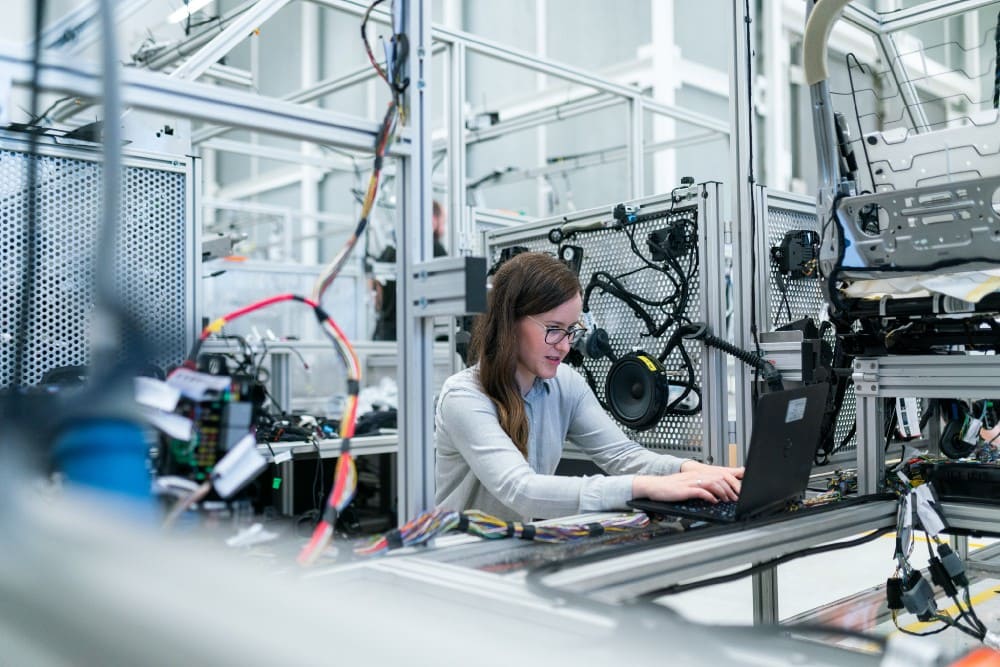Will automation steal our jobs or create new and better ones? Will it generate more value for everyone, or increase inequality in resources?
Economists have long debated the subject of automation. Some have argued that it will trigger an unprecedented wave of technological unemployment. Others that this is greatly exaggerated and that brand-new jobs will keep coming in.
By confronting each of these narratives, let’s uncover how automation will affect the quantity and type of work we’ll conduct in the coming century.
Substituting vs Complementing Automation Effects
In the 1800s, hundreds of thousands of horses roamed the streets of New York.
Residents and travelers relied on horse-driven street cars to move fast and easily from one point to another. It was the best mean of transportation you could ever wish for at that time. And god forgives you had to do without a horse.
Yet, such a large population of animals came with some serious issues. At one point, there were so many horses that the city was literally covered with manure. Some commentators even believed that New York would be buried under a 3-story pile of manure in the next 30 years.
That’s not what happened though. In the 1910s companies like Ford brought a game-changing technology: engine cars. In only 20 years, this cheaper and faster means of transportation completely replaced horses.
Such a drastic change inspired economist Wassily Leontief a famous claim: what happened to horses would happen again to humans.
The same way more efficient transportation technologies made horses obsolete, we’ll find a more robust and powerful substitute for human labor.
As often, the story is more complicated than that. When talking about the impact of automation, economists generally consider two main forces driving technological changes. The first one is what we have seen as the substituting force. But that is only one part of the story.
The second force is about how technological changes can grow the economic pie bigger. When for example British weavers used automatic machine looms, they multiplied their productivity by 5 and increased the quality and consistency of their output. These major improvements made it possible to produce more clothes, sell more items, and expand the industries further.
As a result, although less labor-intensive at first, this technology complementing human hands fostered sustained economic growth. It strengthened a booming industry and gave more jobs to everyone.
These two forces — substituting and complementing- define how automation translates into the economy. It also helped establish a consensus among economists: that no matter the disruption produced by technology it will always deliver more economic output.
This is how the agricultural, industrial, and digital revolutions brought about abundance: from a temporary job setback to stronger economic growth.
But that accepted fact is increasingly under question with new economic evidence.
Routine vs variable tasks: The ALM hypothesis
When looking at the job distribution from the 1980s, economists made a surprising discovery. What economists called middle-skilled jobs (like clerks and secretaries) decreased in numbers compared to high-skilled (like lawyers, managers, and physicians) and low-skilled jobs (like manual manufacturing and service jobs) in the computer era.
Before that, the various waves of technological change provided growth to either opposite end of the job market. The First Industrial Revolution benefited non-skilled workers in spite of skilled weavers and craftsmen. The post-World War II economy gave room to a large pool of office and knowledge workers. Middle-level jobs only followed the trend and contributed to the emergence of a prosperous middle class. Until the 1980s, when middle-class jobs started to sharply declined.
Researchers Autor, Levy, and Murnane (ALM) attributed this job polarization to the type of tasks carried out by middle-class workers.
Whereas high-skilled jobs implied variable cognitive tasks like strategic planning or management, middle-skilled jobs involved routine cognitive tasks like data validation or administrative tasks.
Contrary to what we may think, low-skilled jobs also meant conducting variable manual tasks like picking up objects or serving customers. Responsibilities that computers and robots still have a hard time taking on.
This difference between routine and variable tasks explained why middle-skilled jobs were much more susceptible to automation. As new digital technologies made it easier to process routine tasks, these were the first to be automated.
In other words, Autor and colleagues relied on the hypothesis that automation only applies to work with standardized requirements, both cognitively and manually. They believed that it would be a long time before creatively and socially evolving jobs would be caught up by technologies.
The continuous improvements of AI and deep-learning-based technologies are yet proving them more and more wrong.
Why AI will automate a wide range of human capabilities

When researchers Autor and colleagues came up with their hypothesis, they mentioned tasks like “legal writing” “driving a truck” or “Medical diagnosis” as non-routine tasks.
Yet, each of them turned out to be highly automatable.
Document automation software is automatically generating well-thought-out letters, contacts, and agreements. Self-driving trucks are relying on lidar and radar sensors and digital-twin software to operate freely on US highways. Deep-learning-based vision systems are beating human pathologists in finding cervical precancers.
And these are not isolated cases. Many tasks considered in the past exclusively human -like writing or designing pictures- are now performed by artificial intelligence.
Autor and colleagues assumed that as long as no general intelligence is developed, a substantial number of human-excellence tasks will escape automation. They believed that machines won’t ever be able to emulate what humans are really good at.
Yet, even though there’s no sign of human-level intelligence, AI systems are dealing with a broader and broader range of tasks. Not because they are becoming good at copying human intelligence, but because they are growing machine-specific skills. They are being extremely proficient at huge database processing, deep pattern detection, and repetitive computations -capabilities where humans deliver poor performance.
Starting from this assumption, it’s easy to see that any so-called variable tasks can become routine. It’s just a matter of time before sophisticated algorithms might take up a substantial part of any equation. That doesn’t necessarily mean that they eventually will and should handle every human capability, but at least a significant part of our current tasks will be automated.
What are the economic consequences of that gradual technological progress? The value of human labor will automatically decrease.
Automation and Inequalities: the Labor/Capital Share Equilibrium
From a standard economist’s point of view, each worker is building throughout his life his own “human capital”. Thanks to years of education, training, and skill acquisition, they sell the product of their life-long work experience to employers. That’s a crude explanation, but it is in part why some professions are more valuable than others: because they are more in demand.
Yet, with the structural technological unemployment we talked about earlier, there might soon be no demand for human labor. As automation will provide the same capabilities with cheaper and more reliable benefits, people even with sophisticated skill sets will lose their economic value. This might result in technological unemploment, when the overall demand for human work will fall.
More likely, it will lead to a state of “technological overcrowding” as Daniel Susskind put it. The lack of satisfying and well-paid jobs will increase competition and will discourage many workers to find new jobs. They will deliberately choose inactivity, or at least non-economic activity.
What will happen to all the value usually assigned to human labor? It will turn into accumulated capital, that is, pass into the hands of owners of automation technologies. This explains the demise of a long-established economic fact: the capital-labor share ratio.
Throughout the twentieth century, economists found that labor income accounted for ⅔ of the economic input, while the remaining third was assigned to the income of traditional capital. And year after year this proportion remained unchanged.
But in the last decades, the labor share has dropped, and the capital share has grown, in both developing and developed countries. This increasing inequality of distribution between human workers and capital owners can be attributed to several reasons :
- The emergence of “superstar firms” like Apple, Google, or Amazon that are performing increasingly well in their respective markets with low labor needs.
- Globalization, and the accelerated exchange of worldwide capital.
What’s the one thing in common between each of these factors? They all relate in one way or other to technological change. Superstar firms rely on next-generation information technology and software innovations to ensure tremendous productivity gains. Globalization results in part from upgraded means of transportation and communication.
These increasing inequalities might offset the economic abundance that we might expect from technological advancements. If capitalists are keeping the money generated by robots for themselves, who will afford to be technologically unemployed?
That’s why economists and politicians are speaking about UBI (universal basic income). Granting to each citizen might enable the fair distribution of the resources created by automation.
But will UBI resolve everyone’s desire to feel part of society and that everyone else contributes as well? That’s the subject of another article!
In the meantime, according to this story told through the economic lens, technological change doesn’t seem to follow a straight line. So everything is still in human hands for automation to benefit society as a whole!






